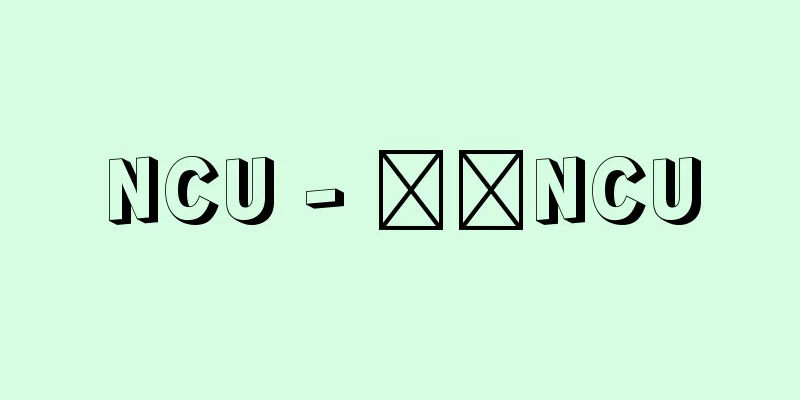Sawayama Poro

|
Year of death: March 27, 1887 Year of birth: 1852.5.10 (1852.3.22) A Christian pastor in the Meiji period. The eldest son of Gennosuke, a samurai of the Yoshiki Mori clan in Yamaguchi. He went to Kobe and learned English at the home of missionary DC Green, and traveled to the United States at his own expense in 1872 (Meiji 5). He studied the Bible and other subjects in Illinois, was baptized, and changed his name from Umanoshin to Borah. After returning to Japan in 1876, he turned down an offer to join the government for a monthly salary of 150 yen, and became a pastor with a monthly salary of 7 yen. He believed that financial assistance from foreign churches was harmful to Japanese churches, and he aimed to become the first Japanese church to be completely self-sufficient, which he achieved through the founding of Naniwa Kokai (Naniwa Church) and Baika Girls' School (Baika Gakuen). This spirit of autonomy influenced other denominations. In 1883, at a missionary conference in Osaka, he presented his theory on self-sufficiency for Japanese churches, which was taken as an argument for the unnecessary use of foreign missionaries and caused a stir. While he demanded strict ethics and financial self-sacrifice from his church members, he continued to carry prayer cards with the names of members, including those who had been expelled, stained with finger prints and tears, until the end, and devoted himself to local evangelism in Kishiwada, Koriyama, and Niigata. Uemura Masahisa is said to have cried when he visited Sawayama, who had endured poverty all his life, battling tuberculosis, and had suffered the deaths of one family member after another. He was a representative of the Meiji religious world who was revered by Japanese believers and pastors in later generations. <References> Jinzo Naruse, "A Modern Paul in Japan," Takemoto Kiyozo, Furuki Torazaburo, "Sawayama Borah Biography," Serino Yotaro, "Sawayama Borah, a Man of Prayer," Kasai Akio, Sano Yasuhito, Shige Yoshiki, "Sawayama Borah," Baika Gakuen ed., "Sawayama Borah Research," issues 1-7 (Oe Mitsuru) Source: Asahi Japanese Historical Biography: Asahi Shimbun Publications Inc. About Asahi Japanese Historical Biography |
|
没年:明治20.3.27(1887) 生年:嘉永5.3.22(1852.5.10) 明治のキリスト教牧師。山口の吉敷毛利家の諸士源之丞の長男。神戸に赴き,宣教師D.C.グリーン宅で英語を学び,明治5(1872)年,私費で渡米。イリノイ州で聖書などを学び受洗,馬之進から保羅と改名。帰国後の同9年,月給150円の官界への勧誘をけり月給7円の牧師になる。外国の教会の資金援助は日本の教会に有害という立場で,日本最初の完全自給を目指し自ら創立した浪花公会(浪花教会),梅花女学校(梅花学園)でそれを達成させる。この自主独立の精神は他派にも影響を与えた。同16年大阪の宣教師会議で日本の教会自給論を発表,外国人宣教師不用論とも受け取られ反響を呼ぶ。厳格な倫理と経済面での自己犠牲を教会員に求める一方,除籍者を含む会員の名を記した手垢と涙跡の祈りのカードを最期まで離さず,岸和田,郡山,新潟と地方伝道に尽力。生涯貧困に耐え,結核と闘い,相次ぐ肉親の訃報を被る薄幸病臥の沢山を見舞った植村正久は号泣したという。後代の邦人信徒,牧師から崇敬されることとなった明治の教界代表者。<参考文献>Jinzo Naruse 《A Modern Paul in Japan》,武本喜代蔵,古木虎三郎『沢山保羅伝』,芹野与太郎『祈の人 沢山保羅』,笠井秋生,佐野安仁,茂義樹『沢山保羅』,梅花学園編『沢山保羅研究』1号~7号 (大江満) 出典 朝日日本歴史人物事典:(株)朝日新聞出版朝日日本歴史人物事典について 情報 |
Recommend
Myristica fragrans Houtt.
An evergreen tall tree of the Myristicae family na...
Song - English
A song composed as an artistic work to express th...
Petrochemical industry - sekiyukagakukougyou (English spelling) petrochemical industry
The petrochemical industry is a chemical industry...
Asian Mouflon - Asian Mouflon
… Wild species of the genus Ovis include Eurasian...
Mu-rong Huang; Mu-jung Huang
297‐348 Chief of the Murong tribe of the Xianbei p...
Meckel's bone - Tips for finding the jaw
… In amphibians, the upper and lower jaws are mad...
Shemoth; Exodus
A book in the Old Testament. In the Masoretic text...
Maimai - Maimai
Among the performing arts performed in the Middle ...
Odes funambulesques (English)
…French poet. He was an admirer of Gautier and so...
Pickled in rice bran miso (pickled in rice bran miso) - Pickled in rice bran miso
Vegetables pickled in a bed of rice bran and salt....
Táncsics Mihály (English spelling)
1799‐1884 Hungarian revolutionary democrat. Born i...
Renewal
...A system by which administrative authorities r...
Aldoxime
...A general term for compounds produced by dehyd...
Separation of isotopes
The process of separating and collecting isotopes ...
Shahti (English spelling) Шахты/Shahtï
A mining and industrial city in the Rostov Oblast...








![Moctezuma [II] - Moctezuma](/upload/images/67cd03469602c.webp)
